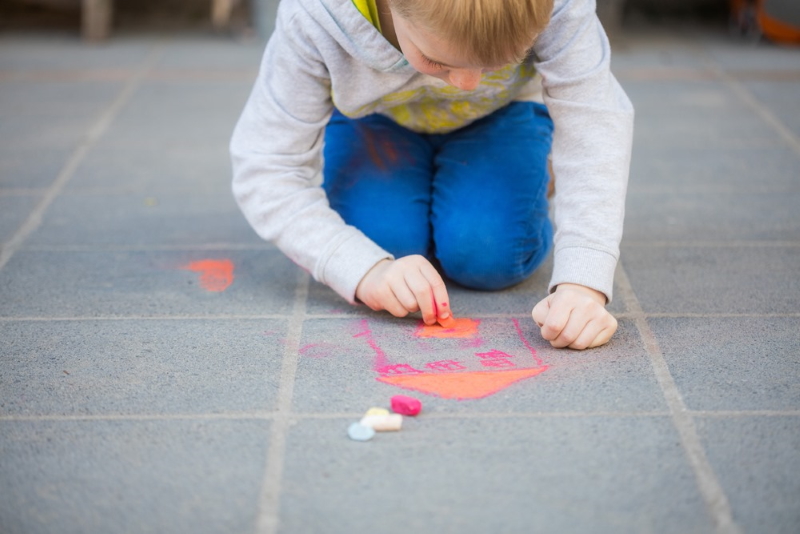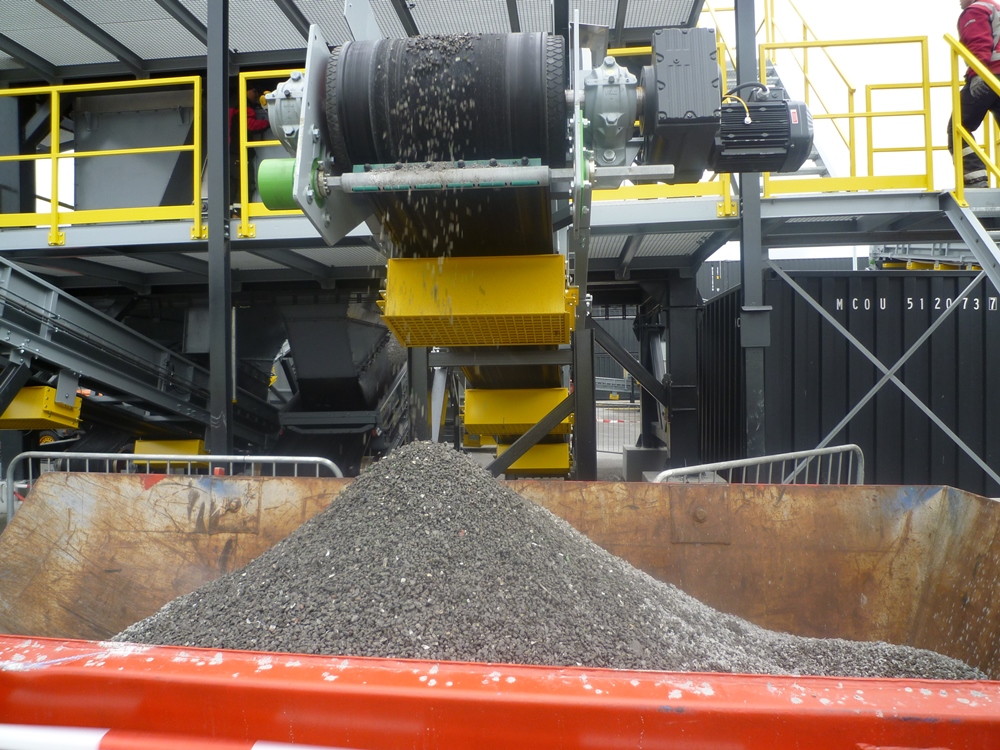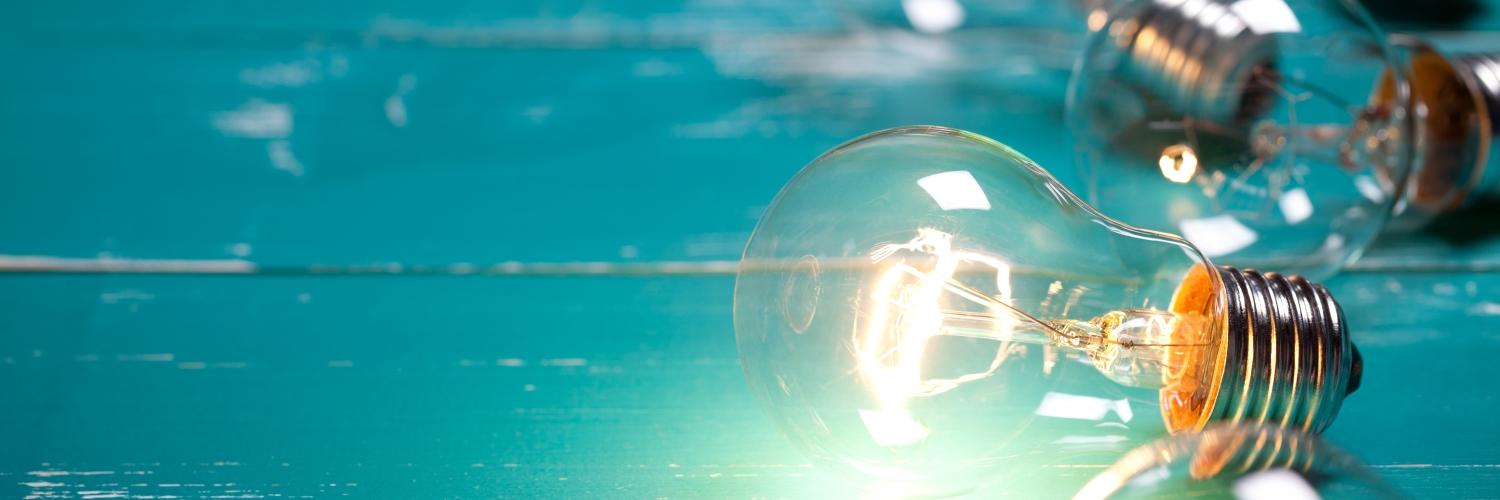6 July 2016
New WtE product deserves recycling label
700,000 tonnes of clean raw materials from bottom ash
Clean raw materials from bottom ash will soon be on the market in large quantities. The waste-to-energy (WtE) plants want them to be classified as recycling, just like the recovered metals, so that they count towards the recycling targets. This would do justice to the facts and promote the use of these circular building materials.
What is the market acceptance of clean raw materials from bottom ash? This is the question on almost everyone's lips in the WtE industry. Next year the Dutch WtE plants will recycle at least half of their bottom ash into clean building materials, as agreed in the Green Deal on WtE bottom ash. These materials can be used in road construction and in the manufacture of concrete and asphalt. This is already the case, but under the 'isolate, control and monitor' regime required by the Soil Quality Decree. Clean raw materials, on the other hand, may be used without these additional precautionary and aftercare measures.

Processed bottom ash is used to make things like paving slabs (photo: AVR)
New market
'We still don't know how big the market actually is,' says Jan-Peter Born of HVC. A number of WtE plants have made individual agreements for the sale of raw materials, for example with brick factories. 'But how big will the market be when all the WtE plants start supplying clean raw materials in 2017? And what will happen to the price?' Born says that many questions remain to be answered. 'For example, what engineering properties will sand produced from bottom ash have? And how much aggregate will we be able to use in the manufacture of brick pavers?
Jan-Peter Born (HVC):
"Our shareholders, the municipalities, will be very pleased if granulates from bottom ash count as recycling."
United Kingdom: Change is in the air
The situation in the United Kingdom is very similar to that in the Netherlands. Only recycled metals from bottom ash count towards the UK's recycling targets, says Sam Corp of the Environmental Services Association (ESA). 'ESA is keen for all raw materials recovered from bottom ash that can be used in construction to count towards local authority recycling targets.' Wales is an exception to the rule and shows how it should be done. The Welsh Assembly does include clean granulates from bottom ash in its recycling inventory. But they are still not counted in its report to the European Commission.
The situation in England is set to change. The government is investigating whether recovered raw materials may count towards the national recycling targets and has asked the European Commission for a decision on this. The Department for Environment, Food and Rural Affairs is being put under pressure to change its policy by the local authorities, who are keen to see their recycling results improved by the addition of clean raw materials from bottom ash.
Recycling label
It would help if the clean raw materials could be given a recycling label. That would not only be good for their image, but it would also do justice to the circular benefits. 'By recovering these materials we are facilitating the circular economy,' says Born. At the moment this is not classified as recycling. 'Everything separated at source can be called recycling, but anything that goes to the WtE plants is classified as incineration,' explains Michiel Timmerije of AVR. According to the waste sector the clean raw materials from bottom ash belong in the same category as compost from kitchen and garden waste, glass, plastic and waste paper. After all, the metals recovered from bottom ash are classified as recycling. They go to the metal industry and the blast furnaces. Why should the other clean raw materials from bottom ash be treated any differently? Timmerije: 'We need a new mindset. The WtE plants should not only be judged on their energy performance, but also on the materials that are recovered and reused as building materials or for other purposes. We make clean products that can be used as direct replacements for primary raw materials.'
Michiel Timmerije (AVR):
"We make clean products that can be used as direct replacements for primary raw materials."

When classified as recycling, 350,000 tonnes of clean raw materials from bottom ash will count towards the recycling target next year, and this will rise to no less than 700,000 tonnes in 2020
Recycling targets
The recycling label would also make it easier to meet national recycling targets. For years the recycling rate of household waste has been stalled at about 50%. This has to be increased. The government wants to reduce household residual waste by increasing recycling rates. Counting the 350,000 tonnes of clean building materials from the household waste fraction of the WtE bottom ash as recycling from 2017 will bring the recycling rate closer to the target. And from 2020 the amount produced will rise to as much as 700,000 tonnes. Born: 'Our shareholders, the municipalities, will be very pleased if granulates from bottom ash count as recycling, because they have a major commitment to meet in this area. They will be able to use the clean sand we produce in the construction of roads.'
Germany: sixteen different rules
Carsten Spohn has no doubts that clean mineral raw materials from bottom ash reduce the use of primary raw materials, with clear benefits for climate protection and raw materials efficiency, and therefore for sustainability. Spohn is the director of ITAD, the German association of WtE plants. 'We are waiting anxiously for new legislation with clear rules on the recovery of raw materials from bottom ash and incentives for improving bottom ash quality by permitting new uses for cleaner bottom ash. Even more important is that secondary minerals take priority in the construction of roads, noise barriers and other works. Giving them recycling status is one of the keys to achieving that.' The German situation is very different from that in the Netherlands. Germany is a federal republic with sixteen federal states, most with their own set of rules on bottom ash. Spohn: 'On top of that, there is less acceptance of clean raw materials from bottom ash than in the Netherlands, despite all our efforts. This may be because, in contrast to the Netherlands, we have many primary minerals available to us.'
Carsten Spohn (ITAD):
"Secondary materials must be given priority in the construction of roads and noise barriers."
Innovative techniques
The recycling label would also be a just reward for all the extra effort the WtE plants are putting into cleaning the bottom ash. They are investing heavily in innovative wet and dry techniques or are working with specialised companies. The dry technique consists of crushing and sieving the bottom ash. The wet technique literally involves washing with water, possibly with additives. 'It is like a big washing machine,' says Timmerije of AVR. 'The contaminated materials are concentrated in the resulting sludge, which is rinsed out. This sludge - which may be no more than 15% of the total volume of bottom ash - can then be landfilled.'
This does not generate any extra income, says Born of HVC. 'We don't get a penny for it. In fact, at the moment cleaning the bottom ash loses us money. When we signed the Green Deal, the price of metal, which is the critical factor for the profitability of the operation, was much higher than at present. But there is no way back: we have given our word. We are doing it for the environment. We don't want to seal up bottom ash under roads any longer.'
Granulates in household waste
Why does bottom ash from the incineration of household waste contain mineral residues? Michiel Timmerije of AVR: 'Things get broken in every household, such as plates or other objects containing ceramic materials. People also sweep their paths and so pebbles, bits of paving and sand also find their way into the waste bin. Most of this material ends up in the residual waste. All in all it amounts to quite a considerable waste fraction.'
European lobby
The Dutch Waste Management Association is campaigning hard to have these recovered raw materials count towards the recycling targets in the Netherlands. A similar effort is being made at the European level by a coalition of national associations in various member states. The Dutch are being supported by their British and German colleagues, among others. Sam Corp of the UK Environmental Services Association (ESA): 'Clean bottom ash can be turned into useful building materials to replace primary raw materials. ESA wants the European Commission to clearly state that all raw materials recovered from clean bottom ash can be counted as recycling. This is already the case for metals from bottom ash, but not for other raw materials.' Corp is of the opinion that this would be consistent with the European Commission's proposals for a European circular economy. 'All EU member states must now put pressure on the Commission to recognise all the raw materials recovered from bottom ash as recycling.'
Sam Corp (ESA):
"All raw materials recovered from bottom ash should count towards local authority recycling targets."
WtE granulate statistics
Each year the Dutch WtE plants process about 7.7 million tonnes (Mt) of combustible residual waste with energy recovery. Roughly half of this, about 3.5 Mt, consists of Dutch household residual waste; the rest is commercial waste, foreign residual waste, and sorting and recycling residues. After incineration about a quarter of the weight remains behind in the form of bottom ash. After recovery of the metal fraction, and sometimes the removal of the remaining sludge as well, the mineral fraction amounts to about 700,000 tonnes per year.
The Green Deal on WtE bottom ash signed in 2012 states that in 2017 at least half the recovered materials should be used as clean building materials. If this waste stream is classified as recycling, it means that next year 350,000 tonnes of raw materials from bottom ash can be counted towards the recycling target. From 2020, when all raw materials from bottom ash should be available for unrestricted use, this amount will then rise to 700,000 tonnes. Municipalities that have the bottom ash from their incinerated residual waste turned into clean raw materials, should be able to add this to their recycling inventories. This will raise the total percentage of household waste recycled in 2017 by about 4%.



